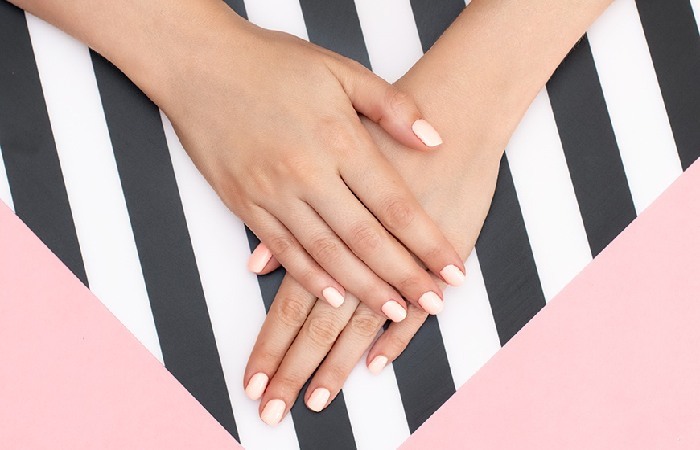Table of Contents
Introduction
Whether you have engagement or wedding photos coming up or want more beautiful Fingernail Health Myths hands, these tips are sure to help.
Have the dry weather and all those Christmas dishes left your hands messy? We would all like to have cared-for, beautiful, and cared-for hands. But, it is difficult if your hands have problems like yellow nails, brown spots, and signs of aging.
Misconceptions About your Fingernail Health Myths

A lack of accurate information often exacerbates Fingernail Health Myths problems. It may surprise you that there are several myths about nails – a recent Well + Good article we looked at debunked many of them.
Gel and Acrylic Manicures Damage Nails. Fingernail Health Myths
Fake. “While the chemicals used can dry out, most of the physical damage (i.e., flaking or even texture) that you see do cause by a poor removal process,” Steinmetz explains. Whether you do it yourself or in a salon, remember that every step of removal is essential here: buff the top coat of polish, wrap each nail in nail polish remover until the polish starts to peel off the sides, and gently press the rest—frosting with an orange stick to finish.
Ridges on the Nail Bed are a Sign that Something is Wrong with Fingernail Health Myths
Mostly false. “Vertical lines on the nails, also called ridges, are a common effect of nail aging. As nails age, they become less able to soak nutrients and keep moisture. This, combined with cell turnover variations, causes an uneven appearance,” says Steinmetz.
However, suppose his ridges run horizontally from side to side of the nail (called “Beau’s lines”). In that case, he may want to have them examined by a dermatologist to rule out any underlying conditions.
Myth: you Should Always Soak your Nails Before a Manicure.
Fake. “Water dehydrates your nails and temporarily expands your nail beds, causing any polish you apply to lift and chip faster,” Steinmetz warns. So the next time you paint your nails or visit a salon, skip the soak.
Myth: White Spots on Nails Does cause by Calcium Deficiency.
Fake. “White spots on the nails are titled leukonychia and are often mistakenly thought to be caused by calcium deficiency. However, the most likely cause is minor nail trauma when blows and daily bumps damage the nail’s surface,” says Steinmetz. “The top thing to do now is to wait for the marks to fade with the rest of your nails,” she adds.
Myth: Nails Sometimes Need to Breathe.
Fake. “By the time you can see your Fingernail Health Myths, they’re already dead,” says Steinmetz. (Which means that they are not living beings that breathe).
The real reasons for taking the occasional manicure break have more to do with giving them a “respite” from repeated rounds of polish, strong remover, and any synthetic glue, whether you like extensions or acrylics, which can especially dry out your nails.
Myth: Yellow Fingernail Health Myths are Cause for Concern.
Mostly wrong. “Yellowing nails are most often caused by wearing nail polish dark in color. One of the best ways to prevent yellowing is to use a good base coat to keep the polish from bleeding onto the nail. Nail plate,” says, Steinmetz.
If you don’t wear polish regularly and still notice your nails turning yellow, or if there are accompanying symptoms such as thickening or chipping, it may be a fungal infection. Or an underlying condition.
Conclusion
Its myth has gained strength by improving the general Fingernail Health Myths. Unfortunately, both experts say that it won’t strengthen your nails. Instead, the best way to help keep your nails healthy is to keep them moisturized, recommended with cuticle oil. “This will prevent breakage so you can get a longer length.
Read Also: Healthy Italian Food Dinners (Low Calorie)
